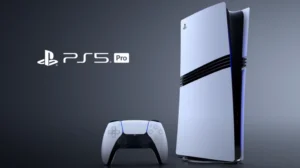Game development can vary significantly in terms of its timeframes and process, dependent upon a number of factors including the platform/format for which it is developed (e.g. PC, console, mobile, VR etc.), the scope/size of the game and the resources available to the development team. Games can take anything from 6 months to 3 years between initial concept and final product launch, with most falling into an 18-24 month window.
The two key processes leading up to a game’s launch (development & publishing) are separate, but increasingly closely related. The key stages of both outlined below:
Development: This is essentially the “making” of the game itself. In some cases it can be done by a single, solo developer but more typically this is done by a larger group of developers organised into a “studio”. Within the studio there are a number of different functions involved in game development including design, production, programming, art, audio and quality assurance (QA).
Games typically start off as concepts with rudimentary themes, mechanics, narratives and art outlines in documents & drawings. This is followed by one or more rounds of prototyping where small playable builds are put together to test out the concept in more detail. Additional (often external funding) usually is the required at this time as a broader set of functions become involved in the main build – and a good prototype is often required to secure the funding to take the game to the next stage.
Development is managed across a number of teams by a producer who ensures that the game is built according to the specification and that it hits the pre-planned development milestones. When an initial publisher is involved, these milestones will be contractually agreed and will often correspond to payment instalments.
There are a number of interim stages that may be involved in the development process before the final, full launch. These can include:
- Vertical slice: A small, self-contained, fully-playable portion of a game that shows the intended final player experience. Unlike a prototype, the quality level of the vertical slice experience should be as high as in the finished game. Often used to secure funding for the full game, it may involve “throwaway” work and therefore be can be an expensive item to produce
- Alpha: This is a development milestone that marks the completion of fundamental game mechanics, along with placeholder art, animation, and audio for all game content. At this point the game runs smoothly on the designated hardware in debug mode, and most significant technical tasks have been accomplished
- Beta: At this stage, all coding, art, audio, and design elements are usually finalized, leaving only bug-fixing tasks. New features or content are rarely added at this stage, as the main focus is on resolving any outstanding issues. Additionally, a game in Beta may also be launched in a limited form to the public (e.g. as an Early Access title on the Steam storefront) to allow its features to be effectively play tested by a much wider audience.
Publishing: Historically – and particularly during the period where a physical retail business model predominated – this aspect of the game productions & launch process involved a publisher that would be responsible for the physical production & distribution of a game (via retail) and its marketing to the consumer (both before and after launch). As games have moved to a primarily digital distribution model over the last decade, publishers role in distribution has diminished. Publishers still remain important for game developers for a number of reasons. These include the following key aspects:
- Access to project finance: As game development requires a significant amount of upfront investment, development funding advances from publishers remain an important source of funding for studios. Publishers usually recoup their full initial investment from game sales revenue, then take a cut of subsequent revenues above this (typically 30-60% but can be wildly different depending on the exact contract commercials)
- Marketing: Publisher primary role is to increase the sales of a game via their marketing capabilities. This can take place through a number of channels including PR, events, programmatic marketing, social media and influencers/streamers. This area of the business is highly dynamic and rapidly evolving, meaning publisher have to constantly stive to improve their capabilities in the space.
- Platform Holder Relationships: In the current world of digital distribution, the key gatekeepers that control access to consumers are the platform holders / digital storefront owners. For console games there are 3… Sony (PlayStation), Microsoft (Xbox) and Nintendo (Switch). On mobile, Apple(AppStore) and Google (PlayStore) perform this role. PC is an open platform but the vast majority (>85%) of sales go via Valve Corporation’s online storefront Steam. These companies can have a major impact on a game’s sales by promoting it on their platform and/or through their own marketing channels. Publishers with a good relationship with these parties can leverage to the benefit of studios they work with, although their remains a risk of disintermediation as platform holders become more willing to work with studios directly.
The mechanism through which games generate revenue is both complex and continuously evolving with multiple changes having taken place over the last decade in particular. Business models also vary across platforms. In simple terms however, there are three main business models that games companies use to monetise:
“Premium”:
This is the more traditional, transactional model that was the dominant variant historically. Games are purchased by consumers to own permanently in exchange for an upfront payment. This model was originally associated with the purchase of physical, boxed product sold via retailers. Developers & publishers would each take a % of each game’s sales revenue. The Premium sales model itself has remained significant even as the physical retail components within the value chain have dwindled. Consumers now can pay upfront on online storefronts for digital games that they subsequently download to own on their device. This remains particularly the case for console games and to a lesser extent for PC games. By contrast, it is now rarely seen in the mobile games world.
Free-To-Play (FTP):
This covers several different business models that have the unifying feature of a game that is playable in some form for zero financial cost to the consumer. The 3 major subsets of FTP are as follows:
- Microtransactions / In-app purchase: In this model, revenue is generated for the developer/publisher via the sale of optional in-game items (e.g. cosmetic items, additional lives, in-game currency etc).
- Ad-funded: This is the dominant model in mobile games, where developers receive a proportion of the -revenue from ads (either banner or interstitial video) displayed to a player during their interaction with the game
- Freemium (“Battle Pass”) model: In this model, a basic tier of the game is available for free, but users can pay to upgrade to a “premium” tier that offers a purchasers number of perks (additional in-game items, accelerated progression etc). These premium tiers may be ongoing or be time-limited for a particular “season”.
Subscription:
Increasingly popular, this model offers gamers ongoing access to a large library of games content in exchange for a monthly fee. The leading example of this is currently Microsoft’s Xbox Game Pass, which effectively acts as a “Netflix for games” on the Xbox platform. Developer compensation models vary between different subscription service providers but typically this will involve some for of fixed fee for inclusion of the game within the service for a set period of time.
The business models outlined above are the predominant way for developers/publishers to monetise, although for particularly successful IP there also exists the opportunity to monetise via licencing & merchandising. Game IP is becoming increasingly valuable in the TV & movie world following the recent high-profile successes such as The Super Mario Bros Movie, The Last Of Us and The Witcher.
As no revenue possible until the game is launched, a dependable source of upfront finance is a necessity for development to take place. For the largest corporate studios this will come from their parent company, and some independent studios are able to fund development from co-development “work for hire” profits, but in general the majority of studios will require some form of external funding to develop the game. The most common form of funding is project finance, where an initial upfront investment into the development of a game is recouped after launch via a share of net sales revenues. Typically, it will be a publisher that provides this kind of financing, but an increasing number of non-publisher sources are emerging in the form of dedicated “games funds” such as Kowloon Nights & WINGS interactive.
For smaller development projects, government grants and/or crowdfunding (e.g. Kickstarter) can also act as a funding source, although the sums involved here usually only sufficient to fund initial prototype development
As an alternative to project funding, developers can also look for funding in exchange for an equity share. This funding would be provided by angel investors, venture capital, private equity or larger “strategic” corporate entities e.g. Tencent.
This has been a very brief introduction to the business of video games. If you need more insight & guidance, please reach out to us at contact@playeroneconsulting.com. We can’t wait to be your trusted guide though this world, and help you to find the opportunities that will enable your success there.
More Insights

Report - Welcoming Women in Games

Player One Consulting x Ukie: Games Growth Programme

The First "Brain Trust" Session

Six of the Best








